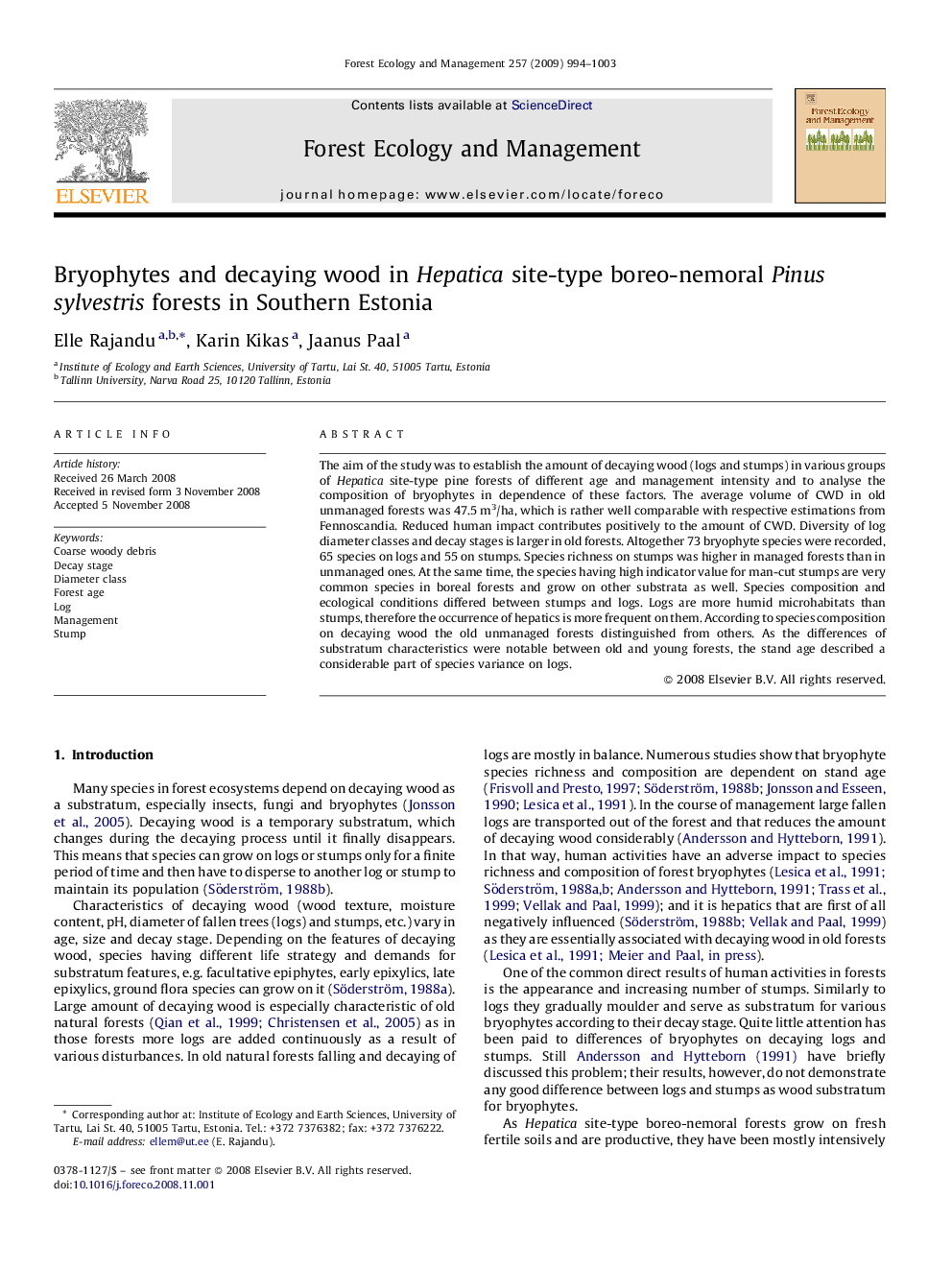| کد مقاله | کد نشریه | سال انتشار | مقاله انگلیسی | نسخه تمام متن |
|---|---|---|---|---|
| 89107 | 159332 | 2009 | 10 صفحه PDF | دانلود رایگان |

The aim of the study was to establish the amount of decaying wood (logs and stumps) in various groups of Hepatica site-type pine forests of different age and management intensity and to analyse the composition of bryophytes in dependence of these factors. The average volume of CWD in old unmanaged forests was 47.5 m3/ha, which is rather well comparable with respective estimations from Fennoscandia. Reduced human impact contributes positively to the amount of CWD. Diversity of log diameter classes and decay stages is larger in old forests. Altogether 73 bryophyte species were recorded, 65 species on logs and 55 on stumps. Species richness on stumps was higher in managed forests than in unmanaged ones. At the same time, the species having high indicator value for man-cut stumps are very common species in boreal forests and grow on other substrata as well. Species composition and ecological conditions differed between stumps and logs. Logs are more humid microhabitats than stumps, therefore the occurrence of hepatics is more frequent on them. According to species composition on decaying wood the old unmanaged forests distinguished from others. As the differences of substratum characteristics were notable between old and young forests, the stand age described a considerable part of species variance on logs.
Journal: Forest Ecology and Management - Volume 257, Issue 3, 10 February 2009, Pages 994–1003